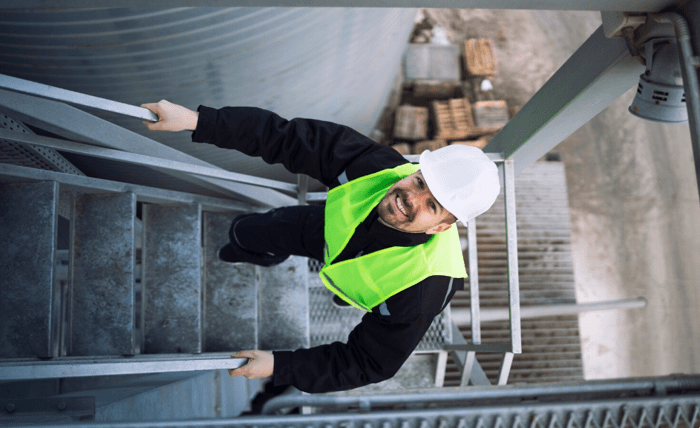
In the world of workplace safety, two acronyms loom large: OSHA (Occupational Safety and Health Administration) and ANSI (American National Standards Institute). For facility managers, navigating the complex web of these regulations can feel overwhelming. OSHA sets the law, the mandatory requirements, while ANSI provides the voluntary consensus standards that define “how-to” and best practices. When it comes to working at height, failing to meet these standards can result in crippling fines, operational shutdowns, and tragic accidents. This is where a properly designed engineered fall protection system becomes a company’s most powerful compliance tool, moving safety from a reactive checklist to a proactive, verifiable system.
Simply buying a harness and a lanyard isn’t enough to “be compliant.” True compliance lies in a system that is designed, installed, and certified for the specific hazards your workers face.
Understanding the OSHA Mandate
OSHA is the legal authority. Its regulations are the law. For general industry (OSHA 1910), fall protection is required for any work performed at four feet or higher. For construction (OSHA 1926), the threshold is six feet.
However, OSHA’s requirements go much deeper. They state that fall arrest systems, such as anchor points, must be “capable of supporting at least 5,000 pounds (22.2 kN) per employee attached,” or be “designed, installed, and used…as part of a complete personal fall arrest system which maintains a safety factor of at least two” under the supervision of a qualified person.
That “or” is where many companies get into trouble. That 5,000-pound figure is often misunderstood. It’s not a blank check to attach a hook to any beam that “looks strong.” How do you know it can hold 5,000 pounds? How do you prove it to an OSHA inspector? The only way is through the analysis and documentation provided by an engineered fall protection solution.
The ANSI Influence: Defining “Best Practice”
If OSHA tells you what you must do, the ANSI Z359 Fall Protection Code tells you how to do it well. ANSI standards are written by a consensus of industry experts, and while technically voluntary, they are considered the gold standard for best practices.
Critically, OSHA often “incorporates by reference” ANSI standards, effectively giving them the force of law in many situations. Furthermore, in the event of an incident, OSHA will use the ANSI standards as the benchmark for what a “reasonable and prudent” employer should have been doing.
ANSI Z359 is far more detailed than OSHA. It provides specific criteria for:
- The design and testing of equipment (harnesses, lanyards, anchors).
- The responsibilities of a “Qualified Person” (who designs the system) and a “Competent Person” (who manages the program).
- The calculation of total fall distance and required clearance.
An engineered fall protection system is inherently designed to meet both OSHA’s legal mandate and ANSI’s high-performance standards, creating the most defensible safety posture possible.
The Role of the “Qualified Person”
Both OSHA and ANSI place immense importance on the “Qualified Person.” This is defined as someone who, “by possession of a recognized degree, certificate, or professional standing, or who by extensive knowledge, training, and experience, has successfully demonstrated his ability to solve or resolve problems relating to the subject matter, the work, or the project.”
In the context of fall protection, this is almost always a professional engineer.
When you invest in an engineered fall protection system, you are not just buying steel and cable; you are buying the expertise of this Qualified Person. They are the ones who:
- Analyze the existing structure to certify its capacity.
- Calculate the maximum arrest forces (MAF) a worker could generate in a fall.
- Design a system (like a horizontal lifeline) that manages those forces (e.g., with in-line shock absorbers) to keep them within safe limits for both the worker and the building.
- Provide formal, stamped documentation and drawings that prove your system is compliant.
This documentation is your “get out of jail free” card during an OSHA inspection. It’s the verifiable proof that you have moved beyond guesswork and implemented a system based on scientific and engineering principles.
Conclusion
Trying to achieve compliance by mixing and matching off-the-shelf components without a cohesive, engineered plan is like building a car from spare parts and hoping it’s street-legal. You might get lucky, but the risks are enormous.
Engineered fall protection is the only methodology that builds compliance from the ground up. It provides a complete, documented, and certified solution that satisfies OSHA’s legal requirements, aligns with ANSI’s best practices, and, most importantly, will function correctly to save a life when it’s needed most.




